- Home
- William Shakespeare
King John & Henry VIII Page 3
King John & Henry VIII Read online
Page 3
Speakers’ Names are often inconsistent in Folio. We have regularized speech headings, but retained an element of deliberate inconsistency in entry directions, in order to give the flavor of Folio.
Verse is indicated by lines that do not run to the right margin and by capitalization of each line. The Folio printers sometimes set verse as prose, and vice versa (either out of misunderstanding or for reasons of space). We have silently corrected in such cases, although in some instances there is ambiguity, in which case we have leaned toward the preservation of Folio layout. Folio sometimes uses contraction (“turnd” rather than “turned”) to indicate whether or not the final “-ed” of a past participle is sounded, an area where there is variation for the sake of the five-beat iambic pentameter rhythm. We use the convention of a grave accent to indicate sounding (thus “turnèd” would be two syllables), but would urge actors not to overstress. In cases where one speaker ends with a verse half line and the next begins with the other half of the pentameter, editors since the late eighteenth century have indented the second line. We have abandoned this convention, since the Folio does not use it, and nor did actors’ cues in the Shakespearean theater. An exception is made when the second speaker actively interrupts or completes the first speaker’s sentence.
Spelling is modernized, but older forms are occasionally maintained where necessary for rhythm or aural effect.
Punctuation in Shakespeare’s time was as much rhetorical as grammatical. “Colon” was originally a term for a unit of thought in an argument. The semicolon was a new unit of punctuation (some of the Quartos lack them altogether). We have modernized punctuation throughout, but have given more weight to Folio punctuation than many editors, since, though not Shakespearean, it reflects the usage of his period. In particular, we have used the colon far more than many editors: it is exceptionally useful as a way of indicating how many Shakespearean speeches unfold clause by clause in a developing argument that gives the illusion of enacting the process of thinking in the moment. We have also kept in mind the origin of punctuation in classical times as a way of assisting the actor and orator: the comma suggests the briefest of pauses for breath, the colon a middling one, and a full stop or period a longer pause. Semicolons, by contrast, belong to an era of punctuation that was only just coming in during Shakespeare’s time and that is coming to an end now: we have accordingly only used them where they occur in our copy texts (and not always then). Dashes are sometimes used for parenthetical interjections where the Folio has brackets. They are also used for interruptions and changes in train of thought. Where a change of addressee occurs within a speech, we have used a dash preceded by a full stop (or occasionally another form of punctuation). Often the identity of the respective addressees is obvious from the context. When it is not, this has been indicated in a marginal stage direction.
Entrances and Exits are fairly thorough in Folio, which has accordingly been followed as faithfully as possible. Where characters are omitted or corrections are necessary, this is indicated by square brackets (e.g. “[and Attendants]”). Exit is sometimes silently normalized to Exeunt and Manet anglicized to “remains.” We trust Folio positioning of entrances and exits to a greater degree than most editors.
Editorial Stage Directions such as stage business, asides, indications of addressee and of characters’ position on the gallery stage are only used sparingly in Folio. Other editions mingle directions of this kind with original Folio and Quarto directions, sometimes marking them by means of square brackets. We have sought to distinguish what could be described as directorial interventions of this kind from Folio-style directions (either original or supplied) by placing in the right margin in a smaller typeface. There is a degree of subjectivity about which directions are of which kind, but the procedure is intended as a reminder to the reader and the actor that Shakespearean stage directions are often dependent upon editorial inference alone and are not set in stone. We also depart from editorial tradition in sometimes admitting uncertainty and thus printing permissive stage directions, such as an Aside? (often a line may be equally effective as an aside or a direct address—it is for each production or reading to make its own decision) or a may exit or a piece of business placed between arrows to indicate that it may occur at various different moments within a scene.
Line Numbers are editorial, for reference and to key the explanatory and textual notes.
Explanatory Notes explain allusions and gloss obsolete and difficult words, confusing phraseology, occasional major textual cruces, and so on. Particular attention is given to nonstandard usage, bawdy innuendo, and technical terms (e.g. legal and military language). Where more than one sense is given, commas indicate shades of related meaning, slashes alternative or double meanings.
Textual Notes at the end of the play indicate major departures from the Folio. They take the following form: the reading of our text is given in bold and its source given after an equals sign. For King John, “F2” signifies a correction introduced in the Second Folio of 1632 and “Ed” an emendation from the subsequent editorial tradition. The rejected Folio (“F”) reading is then given. Thus, for example “3.1.75 test = Ed. F = tast. Ed = task” means that at Act 3 Scene 1 line 75 we have accepted the editorial reading “test” and rejected Folio’s “tast” in the lines “What earthy name to interrogatories / Can test the free breath of a sacred king?” We have also included the suggested editorial emendation “task” as an interestingly different alternative editorial reading. For Henry VIII, “F2” signifies a correction introduced in the Second Folio of 1632, “F3” a correction from the Third Folio of 1663–64, “F4” one from the Fourth Folio of 1685 and “Ed” a correction from the subsequent editorial tradition. Thus, “4.2.8 think = F2. F = thanke” means that at Act 4 Scene 2 line 8, we have accepted the Second Folio’s correction “think” and rejected the First Folio’s “thanke” in the lines “Yes, madam, but I think your grace, / Out of the pain you suffered, gave no ear to’t.”
THE LIFE AND DEATH
OF KING JOHN
KEY FACTS: KING JOHN
MAJOR PARTS: (with percentage of lines/number of speeches/scenes on stage) Bastard (20%/89/11), King John (17%/95/9), Constance (10%/36/3), King Philip of France (7%/44/3), Hubert (6%/52/6), Salisbury (6%/36/6), Lewis the Dauphin (6%/28/5), Cardinal Pandulph (6%/23/4), Arthur (5%/23/5), Pembroke (3%/20/4), Queen Elinor (2%/22/4), Blanche (2%/9/2), Chatillon (2%/5/2).
LINGUISTIC MEDIUM: 100% verse.
DATE: 1595–97? Mentioned by Meres 1598; close relationship to anonymous two-part play The Troublesome Reign of King John (published 1591), but stylistically much closer to later histories.
SOURCES: Scholars dispute the play’s relationship to The Troublesome Reign: is it the principal source or a badly printed text of an early version of Shakespeare’s play? On balance, the evidence supports the view that it was an old play that Shakespeare reworked in his own vein (rather as he reworked other anonymously authored chronicle plays such as The Famous Victories of Henry V and King Leir). The third volume of the 1587 edition of Holinshed’s Chronicles is the primary historical source behind both the anonymous play and Shakespeare’s.
TEXT: The two parts of The Troublesome Reign were reprinted together in 1611 with the title-page claim “Written by W. Sh.” (reprinted 1622 as “Written by W. Shakespeare”), but this was a sales ploy and not a reliable attribution. The only authoritative text is that in the First Folio. Scholars dispute the nature of the copy from which it was typeset; there is some evidence that it may have been the work of two scribes. There are a number of textual problems, most notably in the name of Hubert: this first appears halfway through Act 2 Scene 1 as speaker’s name for the citizen of Angiers (who is initially an anonymous “Cit.”), but it is not used in the dialogue at this point, so the citizen is not identifiable by name to the audience. In the theater, “Hubert” is named for the first time when he swears loyalty to King John and is commissioned to imprison Arthur. Is the same person intended? Editor
s differ in their attempts to untangle this problem: we leave the question open by means of a marginal direction.
LIST OF PARTS
KING JOHN of England
QUEEN ELINOR, his mother, Henry II’s widow
PRINCE HENRY, John’s son, a child, later Henry III
BLANCHE of Castile, John’s niece
LADY FALCONBRIDGE, Sir Robert’s widow
ROBERT Falconbridge, her legitimate Son
Philip Falconbridge, the BASTARD, her illegitimate son with King Richard I, subsequently knighted and known as Sir Richard Plantagenet
James GURNEY, her servant
English lords
William Marshall, Earl of PEMBROKE
Geoffrey Fitzpeter, Earl of ESSEX
William Longsword, Earl of SALISBURY, Henry II’s bastard son
Roger BIGOT, Earl of Norfolk
HUBERT, trusted servant to King John
PETER of Pomfret, a prophet
KING PHILIP II of France
LEWIS the Dauphin, his eldest son
Duke of AUSTRIA, allied to the French
MELUN, a French nobleman
CHATILLON, French nobleman and ambassador to England
CITIZEN of Angiers
CONSTANCE, wife of Geoffrey, John’s deceased older brother
ARTHUR, a child, her son and John’s nephew, Duke of Bretagne
CARDINAL PANDULPH, Pope Innocent III’s representative
FRENCH HERALD
ENGLISH HERALD
FIRST EXECUTIONER
TWO MESSENGERS
A Sheriff and various Lords, Executioners, Messengers, Soldiers, Citizens and Attendants
List of parts LEWIS anglicized form of French “Louis”
Act 1 Scene 1
running scene 1
Enter King John, Queen Elinor, Pembroke, Essex and Salisbury, with the Chatillon of France
KING JOHN Now, say, Chatillon, what would France1 with us?
CHATILLON Thus, after greeting, speaks the King of France,
In my behaviour, to the majesty3,
The borrowed4 majesty, of England here.
QUEEN ELINOR A strange beginning: ‘borrowed majesty’!
KING JOHN Silence, good mother: hear the embassy6.
CHATILLON Philip of France7, in right and true behalf
Of thy deceasèd brother Geoffrey’s8 son,
Arthur Plantagenet9, lays most lawful claim
To this fair island and the territories10 —
To Ireland, Poitiers11, Anjou, Touraine, Maine —
Desiring thee to lay aside the sword12
Which sways usurpingly these several13 titles,
And put the same into young Arthur’s hand,
Thy nephew, and right15 royal sovereign.
KING JOHN What follows if we disallow of16 this?
CHATILLON The proud control17 of fierce and bloody war,
To enforce these rights so forcibly withheld—
KING JOHN Here have we war for war and blood for blood,
Controlment for controlment: so answer France.
CHATILLON Then take my king’s defiance from my mouth,
The furthest limit of my embassy22.
KING JOHN Bear mine to him, and so depart in peace:
Be thou as lightning in the eyes of France;
For ere thou canst report25, I will be there:
The thunder of my cannon shall be heard.
So hence: be thou the trumpet27 of our wrath
And sullen presage of your own decay28.—
An honourable conduct29 let him have:
To Pembroke
Pembroke, look to’t.— Farewell, Chatillon.
Exeunt Chatillon and Pembroke
QUEEN ELINOR What now, my son? Have I not ever said
How that ambitious Constance32 would not cease
Till she had kindled France33 and all the world,
Upon the right and party34 of her son?
This might have been prevented and made whole35
With very easy arguments of love36,
Which now the manage37 of two kingdoms must
With fearful bloody issue38 arbitrate.
KING JOHN Our strong possession and our right for us.
Aside to John
QUEEN ELINOR Your strong possession much more than your right,
Or else it must go wrong with you and me:
So much my conscience whispers in your ear,
Which none but heaven, and you, and I, shall hear.
Enter a Sheriff
He whispers to Essex
ESSEX My liege, here is the strangest controversy44,
Come from the country to be judged by you,
That e’er I heard: shall I produce46 the men?
KING JOHN Let them approach.—
[Exit Sheriff]
Our abbeys and our priories shall pay
This expeditious charge49.
Enter Robert Falconbridge and Philip [the Bastard]
What men are you?
BASTARD Your faithful subject I, a gentleman,
Born in Northamptonshire and eldest son,
As I suppose, to Robert Falconbridge,
A soldier, by the honour-giving hand
Of Coeur-de-lion, knighted in the field55.
KING JOHN What art thou?
ROBERT The son and heir to that same Falconbridge.
KING JOHN Is that the elder, and art thou the heir?
You came not of one mother then, it seems.
BASTARD Most certain of one mother, mighty king,
That is well known, and, as I think, one father:
But for the certain knowledge of that truth
I put you o’er to heaven63, and to my mother;
Of that I doubt, as all men’s children may.
QUEEN ELINOR Out on thee, rude65 man! Thou dost shame thy mother
And wound her honour with this diffidence66.
BASTARD I, madam? No, I have no reason for it.
That is my brother’s plea and none of mine,
The which if he can prove, a pops me out69
At least from fair70 five hundred pound a year:
Heaven guard my mother’s honour and my land.
Aside / To Bastard
KING JOHN A good blunt fellow.— Why, being younger born,
Doth he lay claim to thine inheritance?
BASTARD I know not why, except to get the land:
But once75 he slandered me with bastardy:
But whe’er I be as true begot76 or no,
That still I lay upon my mother’s head77:
But that I am as well begot, my liege —
Fair fall79 the bones that took the pains for me —
Compare our faces, and be judge yourself
If old Sir Robert did beget us both,
And were our father and this son like him:
O old Sir Robert, father, on my knee
I give heaven thanks I was not like84 to thee!
KING JOHN Why, what a madcap hath heaven lent85 us here!
QUEEN ELINOR He hath a trick86 of Coeur-de-lion’s face:
The accent of his tongue affecteth87 him.
Do you not read some tokens88 of my son
In the large composition89 of this man?
KING JOHN Mine eye hath well examined his parts90,
To Robert
And finds them perfect Richard.— Sirrah91, speak,
What doth move92 you to claim your brother’s land?
BASTARD Because he hath a half-face93 like my father.
With half that face94 would he have all my land —
A half-faced groat95 — five hundred pound a year!
ROBERT My gracious liege, when that96 my father lived,
Your brother97 did employ my father much—
BASTARD Well, sir, by this you cannot get my land:
Your tale must be how he employed99 my mother.
ROBERT And once dispatched him in an embassy
To Ger
many, there with the emperor
To treat of high affairs touching102 that time.
Th’advantage of his absence took the king,
And in the meantime sojourned104 at my father’s;
Where how he did prevail105, I shame to speak.
But truth is truth: large lengths of seas and shores
Between my father and my mother lay,
As I have heard my father speak himself,
When this same lusty gentleman was got109.
Upon his death-bed he by will bequeathed
His lands to me, and took it on his death111
That this my mother’s son was none of his;
And if he were, he came into the world
Full fourteen weeks before the course of time114.
Then, good my liege, let me have what is mine,
My father’s land, as was my father’s will.
KING JOHN Sirrah, your brother is legitimate:
Your father’s wife did after wedlock bear him:
And if she did play false, the fault119 was hers,
Which fault lies on the hazards120 of all husbands
That marry wives. Tell me, how if my brother121,
Who, as you say, took pains to get this son,
Had of your father claimed this son for his?
In sooth, good friend, your father might have kept124
This calf, bred from his cow, from all the world:
In sooth he might. Then if he were my brother’s,
My brother might not claim him, nor your father,

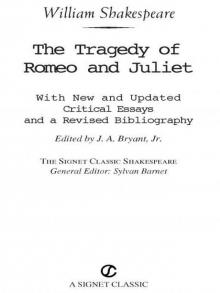 Romeo and Juliet
Romeo and Juliet As You Like It (Folger Shakespeare Library)
As You Like It (Folger Shakespeare Library)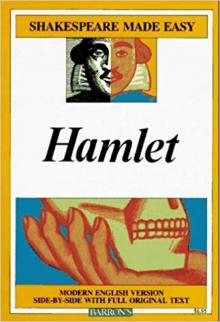 Hamlet
Hamlet Richard II (Folger Shakespeare Library)
Richard II (Folger Shakespeare Library)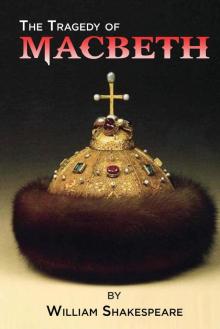 Macbeth
Macbeth Henry V
Henry V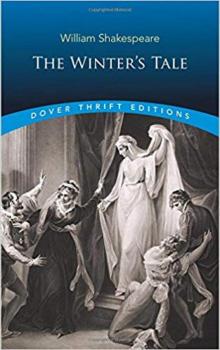 The Winter's Tale
The Winter's Tale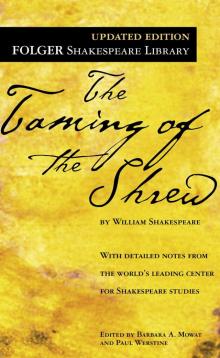 The Taming of the Shrew
The Taming of the Shrew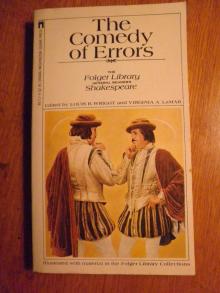 The Comedy of Errors
The Comedy of Errors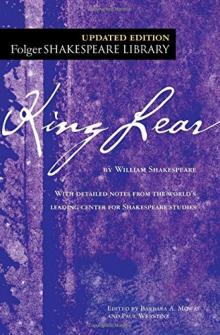 King Lear (Folger Shakespeare Library)
King Lear (Folger Shakespeare Library)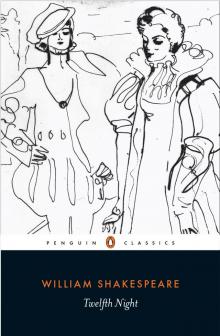 Twelfth Night
Twelfth Night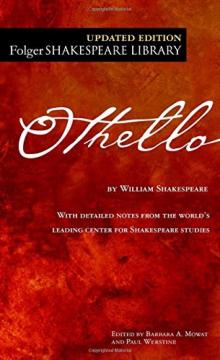 Othello
Othello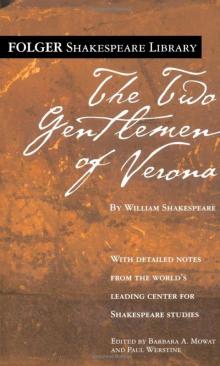 The Two Gentlemen of Verona
The Two Gentlemen of Verona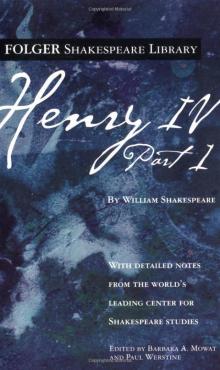 Henry IV, Part 1 (Folger Shakespeare Library)
Henry IV, Part 1 (Folger Shakespeare Library) King John/Henry VIII (Signet Classics)
King John/Henry VIII (Signet Classics)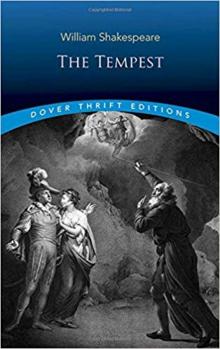 The Tempest
The Tempest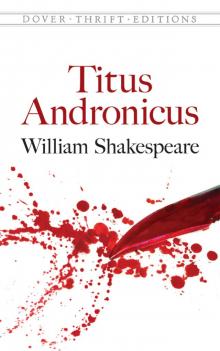 Titus Andronicus (Dover Publications)
Titus Andronicus (Dover Publications)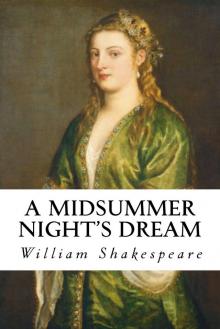 A Midsummer Night's Dream
A Midsummer Night's Dream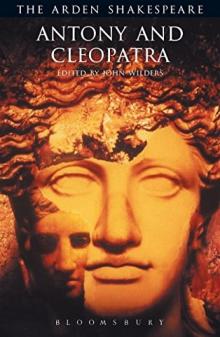 Antony and Cleopatra (Arden Shakespeare: Third Series)
Antony and Cleopatra (Arden Shakespeare: Third Series)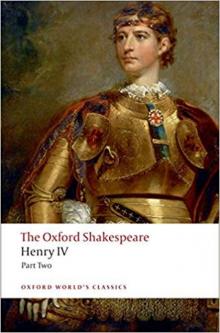 The Oxford Shakespeare: Henry IV, Part 2 (Oxford World's Classics)
The Oxford Shakespeare: Henry IV, Part 2 (Oxford World's Classics)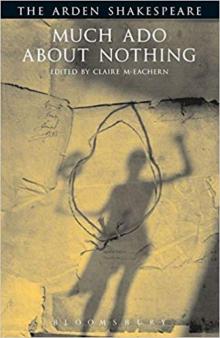 Much Ado About Nothing (Arden Shakespeare: Third Series)
Much Ado About Nothing (Arden Shakespeare: Third Series)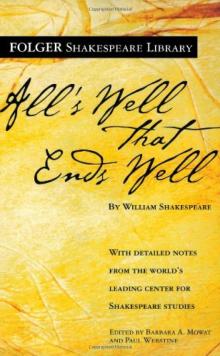 All's Well That Ends Well
All's Well That Ends Well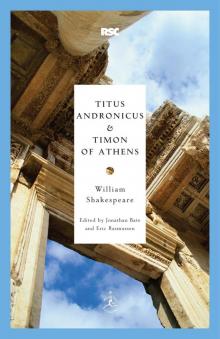 Titus Andronicus & Timon of Athens
Titus Andronicus & Timon of Athens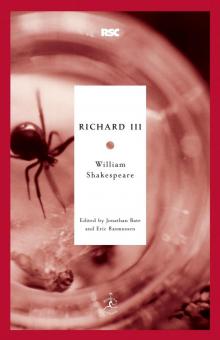 Richard III (Modern Library Classics)
Richard III (Modern Library Classics) Coriolanus
Coriolanus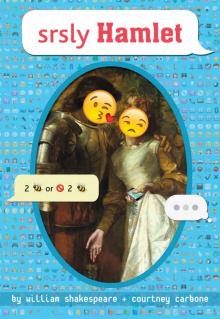 srsly Hamlet (OMG Shakespeare)
srsly Hamlet (OMG Shakespeare) The Merchant of Venice
The Merchant of Venice Richard III
Richard III Richard II
Richard II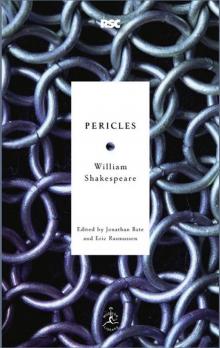 Pericles
Pericles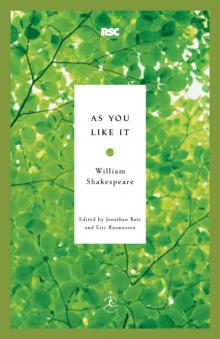 As You Like It
As You Like It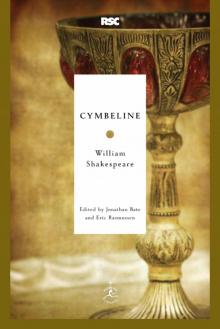 Cymbeline
Cymbeline Alls Wel that ends Well
Alls Wel that ends Well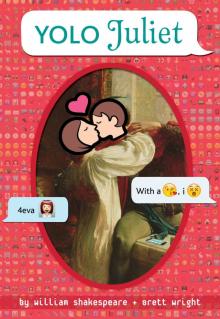 YOLO Juliet
YOLO Juliet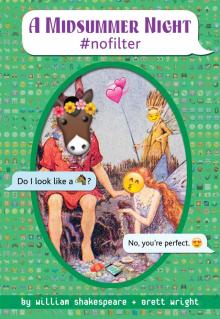 A Midsummer Night #nofilter
A Midsummer Night #nofilter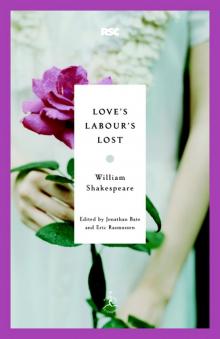 Love's Labour's Lost
Love's Labour's Lost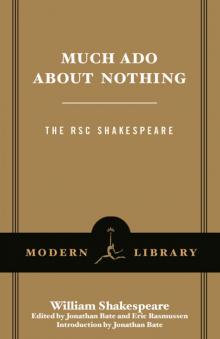 Much Ado About Nothing
Much Ado About Nothing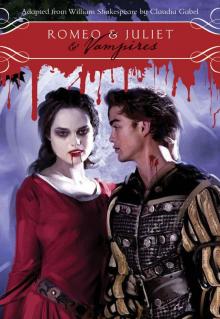 Romeo & Juliet & Vampires
Romeo & Juliet & Vampires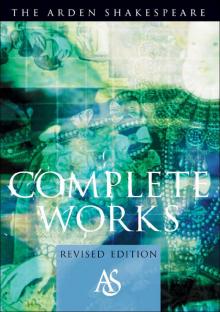 The Arden Shakespeare Complete Works
The Arden Shakespeare Complete Works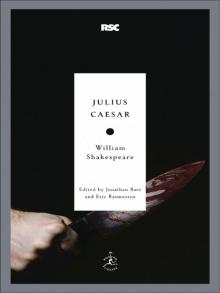 Julius Caesar
Julius Caesar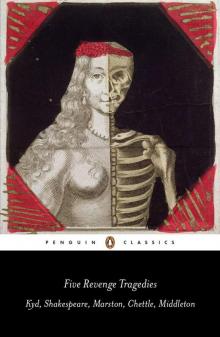 Five Revenge Tragedies: The Spanish Tragedy, Hamlet, Antonio's Revenge, The Tragedy of Hoffman, The Revenger's Tragedy (Penguin Classics)
Five Revenge Tragedies: The Spanish Tragedy, Hamlet, Antonio's Revenge, The Tragedy of Hoffman, The Revenger's Tragedy (Penguin Classics)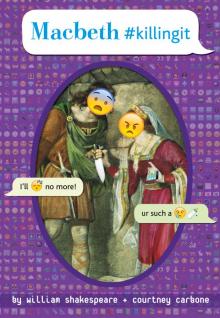 Macbeth #killingit
Macbeth #killingit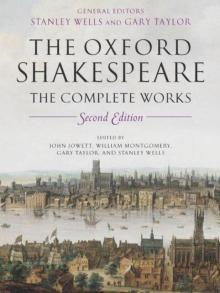 The Oxford Shakespeare: The Complete Works
The Oxford Shakespeare: The Complete Works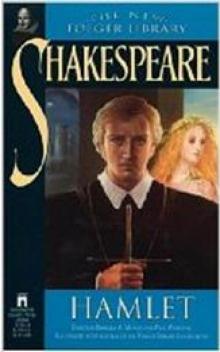 Hamlet, Prince of Denmark (Collins edition)
Hamlet, Prince of Denmark (Collins edition)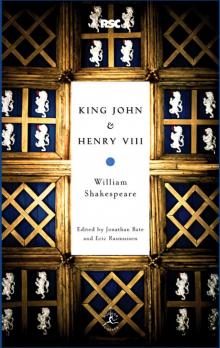 King John & Henry VIII
King John & Henry VIII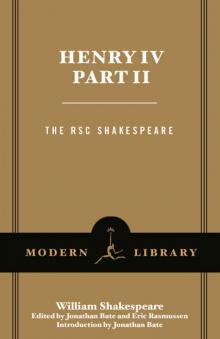 Henry IV, Part 2
Henry IV, Part 2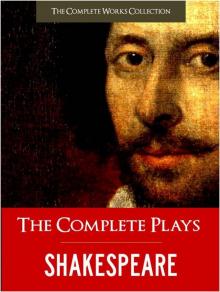 Complete Plays, The
Complete Plays, The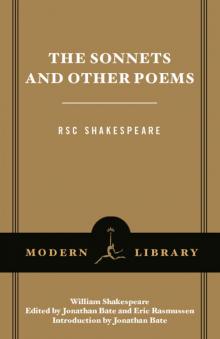 The Sonnets and Other Poems
The Sonnets and Other Poems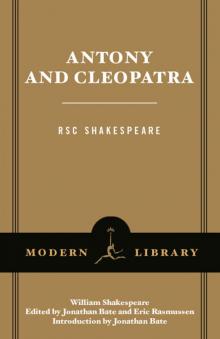 Antony and Cleopatra
Antony and Cleopatra Henry IV, Part 1
Henry IV, Part 1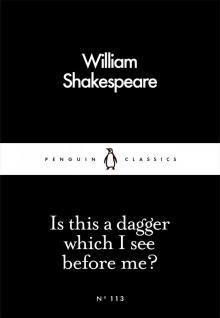 Is This a Dagger Which I See Before Me?
Is This a Dagger Which I See Before Me? The Complete Works of William Shakespeare In Plain and Simple English (Translated)
The Complete Works of William Shakespeare In Plain and Simple English (Translated)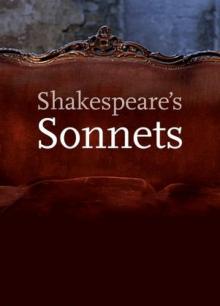 The Sonnets
The Sonnets